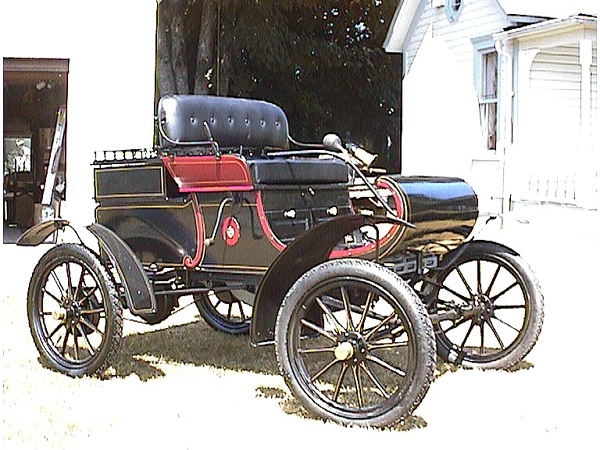The 1901-1904 Curved dash Olds is considered the first mass produced automobile. While the Model T is considered the first assembly line auto. The curved dash olds did introduce the assembly line to auto manufacturing but the olds was mostly constructed in a station/group assembly. They completed task on groups of cars. The curved dash olds was to be the auto everyone could afford for around $650. Olds produced 12,000+ curved dash olds from 1901-1904. One of the original carburetors is a Holley. Dad is running an original Holley on one of his although a chainsaw carb would do fine. Dad has 2 which he puts a couple hundred miles on each year. The car is a single cylinder with a 125lb flywheel. Normally they would run about 25mph (which is pretty fast for a wooded sleigh sitting on top of 4 tall wheels) but with some help from my brother, they ground a new cam. Dad has had it up to 40mph but chooses not to go any faster. Currently he is re-working wheel bearings and axle bearings. He just got back of a tour with cars a bit older and he ran circles around them. He even set a new hill climb record in his class at an event not too far away.

The curved dash olds is best remembered for the song that was written about it:
http://www.archive.org/details/InMyMerr1932The Curved dash olds is known for a coast to coast trip in 73 days. The year is some where between 1902-1904 for which there were no real roads at the time. There is a book about it which is pretty interesting. They made a list of everything that broke, presented it to RE Olds in order to improve on the car. RE Olds said, good, the more parts we can sell! Amazing, money in after market parts was alive even back then!
Till 1904, the curved dash Olds was a car for "everyone". After 1904 the Olds company decided to make higher class autos. RE Olds disagreed and eventually left the company to start REO. Around 1910, 1911, the Olds were becoming FANTASTIC. These high wheel huge cars rival large trucks today. Awesome autos. They look neat in picture but take your breath away when you see them. The seats are as high as your chest. The wheels are huge. OF course few could afford them and that became the downfall of OLDS which was soon bought out like other car companies of the time.
*Update* Should read USA Mass produced autos.




